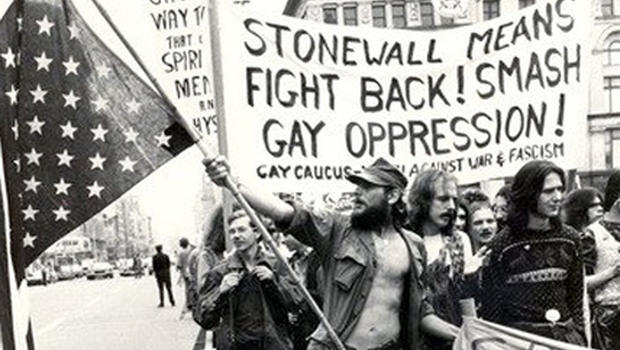by Gwynn Van Houten
May 9, 2016 saw the first step towards a significant milestone in LGBT history. In a meeting with local representatives, President Obama made the proposition that Stonewall Inn, a popular gay bar and site of a series of historical riots, be declared a national monument, the first of its kind. The decision is expected to be ratified next month, coinciding with Pride Month, and has received practically unanimous approval amongst the residents of Greenwich Village — the Manhattan neighborhood Stonewall occupies — and with lesbian, gay, bisexual, and transgender people and their supporters across the nation.
The demonstrations that occurred at Stonewall, particularly the ones that began on June 28, 1969, are widely considered as catalysts in the liberation of the LGBT community from oppressive laws and sentiments. Since it opened its doors in 1967, Stonewall (like the other rare establishments that served gay people) was frequently raided by the police, about once a month. At 1:20 A.M. on the day of the famous riots, six policemen, four in disguise and two in uniform, entered the bar, declared that they were taking it over, and began to check the identifications of the approximately 205 patrons, who naturally resisted. People accused of being transgender or in drag were taken to the women’s restroom and checked. The sense of discomfort heightened as some of the lesbians in the midst of the commotion were frisked by police. By the end of the raid, several drag queens and a lesbian were forced into a police car.

Protesters march through New York.
But a crowd of over a hundred protesters had gathered in front of the bar, some of them Stonewall customers who had been released and some of them passersby. Seizing the opportunity for a revolution, LGBT supporters began protesting, shouting and throwing bottles — one of the first to do so was Sylvia Rivera, a 17-year-old Puerto Rican drag queen who later cofounded Street Transvestite Action Revolutionaries (STAR), an organization that aids young trans people, with Marsha P. Johnson, a black trans woman and fellow protester.
The Stonewall Riots lasted for nearly a week. The people of Greenwich Village sensed a need to make change and took to the local government. In other parts of the country, gay rights groups, such as the Mattachine Society, were inspired, and organized their own protests. Most prominently, the Gay Liberation Front (GLF) and Gay Activists Alliance (GAA) were founded, two large groups consisting of smaller divisions that fought for the various issues plaguing the LGBT community.

That night at Stonewall, at that bar on Christopher Street, the one that wasn’t even licensed to sell alcohol and that had to be protected by the Mafia, that was dirty and had plumbing problems, something sparked. Perhaps, at last, it wouldn’t be the only place where people could dance and hold hands with whomever they wanted, and where freedom to express one’s identity exists without fear of persecution.
Due to its significance in history, Stonewall was added to the National Register of Historic Places in 1999 and labeled a National Historic Landmark in 2000. Last year, on June 23, it was officially recognized by the New York City Landmarks Preservation Commission, the largest city-based preservation agency in the country.
And now, Stonewall’s status has taken an extraordinary leap, as it appears it will join the ranks of the Statue of Liberty, George Washington’s birthplace, Mount Rushmore, and dozens more man-made and geological sites of significance.
By designating a monument for LGBT rights, the community has been given more validation, respect, and hope, for an even brighter future. By designating a monument for LGBT rights, America has made progress.